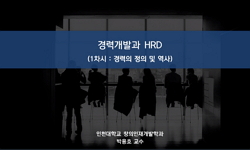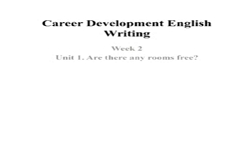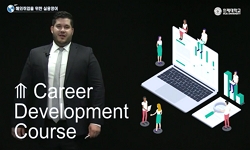2015년 6월 진로교육법이 제정되면서 학생들의 진로개발역량 함양에 대한 학교 안팎의 활동이 집중되고 있다. 본 연구는 교사들이 Career를 ‘진로’와 ‘경력’으로 표현할 때 사용하는 메타...
http://chineseinput.net/에서 pinyin(병음)방식으로 중국어를 변환할 수 있습니다.
변환된 중국어를 복사하여 사용하시면 됩니다.
- 中文 을 입력하시려면 zhongwen을 입력하시고 space를누르시면됩니다.
- 北京 을 입력하시려면 beijing을 입력하시고 space를 누르시면 됩니다.
https://www.riss.kr/link?id=A101740065
- 저자
- 발행기관
- 학술지명
- 권호사항
-
발행연도
2015
-
작성언어
Korean
- 주제어
-
등재정보
KCI등재
-
자료형태
학술저널
- 발행기관 URL
-
수록면
139-155(17쪽)
-
KCI 피인용횟수
0
- 제공처
-
0
상세조회 -
0
다운로드
부가정보
국문 초록 (Abstract)
2015년 6월 진로교육법이 제정되면서 학생들의 진로개발역량 함양에 대한 학교 안팎의 활동이 집중되고 있다. 본 연구는 교사들이 Career를 ‘진로’와 ‘경력’으로 표현할 때 사용하는 메타포를 분석하여 이에 따라 부각되거나 은폐되는 특징을 밝히고자 시작하였다. 메타포는 인간의 사고 과정을 나타낼 뿐만 아니라 행동까지도 영향을 준다. 따라서 교사의 메타포는 학생들의 진로개발을 조력하기 위한 진로교육 현상을 이해하고 개선점을 도출하는 데 기여할 수 있다. 이를 위해 본 연구에서는 문장완성법을 사용하여 115명의 교사로부터 메타포 포착을 위한 자료를 획득하였다. 메타포 도출은 질적 분석방법을 사용하였고, 메타포 위계 결정은 세대 구분에 따라 높은/보통/낮은 수준으로 나눈 후 차이 검정을 통해 양적 분석방법과 병행하였다. 연구 결과, 교사는 본인의 진로에는 인생경력무지개(14.8%), 인생의 길(12.2%) 순으로, 학생들의 상담 시 진로는 인생경력무지개(16.9%), 선택의 과정(14.2%) 순으로 메타포를 사용하였다. 반면 경력 메타포에서는 과거의 경험, 직업 등 이력사항으로 보는 기록(34.0%)이 가장 많았고 그 다음이 인생의 길(17.0%)이었다. 교사는 자신의 진로에서는 자신의 경력과는 달리 높은 수준의 진로 메타포를 사용한 반면, 학생들과의 상담에서는 보통 수준의 진로 메타포를 사용하는 경향이 유의미하게 나타났다. 즉, 교사들은 진로에 대해서는 앞(前)에 관한 메타포를, 경력에 대해서는 뒤(後)에 관한 메타포를 다수 사용하고 있고, 학생들에게는 자신에게 진로를 적용하는 것과는 달리 과거지향적인 경력의 메타포로 진로를 제시하고 있었다. 이러한 결과는 교사들이 미래의 직업세계와 창의적 진로 경로가 요구되는 시대적 변화를 이해하고 학생들의 진로 개척과 도전에 부합할 수 있도록 진로교육 역량이 강화되어야 함을 시사하고 있다.
다국어 초록 (Multilingual Abstract)
After the passing of the future course development law in 2015 June, activities within and outside school occurring for the sake of fostering student course development capabilities are coming to attention. The following research, by analyzing the met...
After the passing of the future course development law in 2015 June, activities within and outside school occurring for the sake of fostering student course development capabilities are coming to attention. The following research, by analyzing the metaphors instructors use when they respectively interpret ‘career1)’ as either ‘future course’ or ‘work experience’1), attempted to elucidate upon characteristics that are emphasized or concealed according to the expression one chooses. Metaphors represent the human thought process, and consequently affect one’s actions. Thus, metaphors frequently utilized by instructors would facilitate a comprehensive understanding of path development education phenomena that will enable development of better path development for students by disclosing specific aspects in need of further consideration. For this end, the following research has used the Sentence Completion test (SCT) to gather data of metaphor use from 115 instructors. Metaphor deduction was performed with quantitative analytic methods, while metaphoric hierarchy was divided into three levels(high-level, average-level, and low-level) after which differentiation check and quantitative analytic method was simultaneously used. Results show that instructors, for their own future course, frequently used metaphors such as ‘life rainbow’ (14.8%) and ‘life pathway’ (12.2%), while they used metaphors like ‘life rainbow’ (16.9%) and ‘the moment of choice’ (14.2%) during student future course consultations. On the other hand, for work experience metaphors, ‘records’ (concerning physical records of past experiences and jobs) ranked the highest (34.0%), while the second was ‘life pathway.’ (17.0%) Contrary to when they were dealing their own future course, it was found that instructors had a tendency to use average-level future course metaphors when they were with students. For their own future course, instructors, contrary to their work experience, used high-level future course metaphors. In other words, instructors frequently used forward metaphors for their future course and backward metaphors for their work experience, and they did not apply the same patterns to their student future course consultation but chose to present past-oriented work experience metaphors to introduce future course investigation methods. Such results call for instructors to foster a better understanding of selections of job choices in the coming future and the current periodic need for a creative course development. Furthermore, these understandings need to be efficiently incorporated to strengthen course development and aid students in active course investigation and coping with course investigation challenges.
목차 (Table of Contents)
- Ⅰ. 서론
- Ⅱ. 이론적 배경
- Ⅲ. 연구방법
- Ⅳ. 연구결과
- Ⅴ. 결론 및 논의
- Ⅰ. 서론
- Ⅱ. 이론적 배경
- Ⅲ. 연구방법
- Ⅳ. 연구결과
- Ⅴ. 결론 및 논의
- 참고문헌
- Abstract
참고문헌 (Reference)
1 교육부, "학교 진로교육 목표와 성취 기준"
2 박미진, "진로성공 대학생의 메타포 탐색" 한국교육방법학회 26 (26): 511-532, 2014
3 한국직업능력개발원, "진로교육 목표 및 성취기준-2015 개정시안 검토 공청회 자료집"
4 김기덕, "인적자원개발에 대한 실무자의 은유 연구" 한국농·산업교육학회 41 (41): 279-302, 2009
5 신덕상, "성인의 학습 참여 동기 유형과학습 메타포의 관계" 2 (2): 101-119, 2014
6 신덕상, "경력단절여성의 경력메타포와 진로성숙도, 진로의사결정능력, 진로자기효능감, 재취업의 관계" 한국인적자원개발전략연구소 10 (10): 133-156, 2015
7 이상진, "경력 정체성과 경력 적응성이 경력 몰입에 미치는 영향" 중앙대학교 대학원 2011
8 임지룡, "개념적 은유에 대하여" 한국어의미학회 20 : 29-60, 2006
9 최운실, "成人敎育類型에 따른 敎育參與 特性分析" 이화여자대학교 대학원 1986
10 Vitalia, I. L., "Using metaphors in experiential group focused on career exploration and development" 33 (33): 383-387, 2011
1 교육부, "학교 진로교육 목표와 성취 기준"
2 박미진, "진로성공 대학생의 메타포 탐색" 한국교육방법학회 26 (26): 511-532, 2014
3 한국직업능력개발원, "진로교육 목표 및 성취기준-2015 개정시안 검토 공청회 자료집"
4 김기덕, "인적자원개발에 대한 실무자의 은유 연구" 한국농·산업교육학회 41 (41): 279-302, 2009
5 신덕상, "성인의 학습 참여 동기 유형과학습 메타포의 관계" 2 (2): 101-119, 2014
6 신덕상, "경력단절여성의 경력메타포와 진로성숙도, 진로의사결정능력, 진로자기효능감, 재취업의 관계" 한국인적자원개발전략연구소 10 (10): 133-156, 2015
7 이상진, "경력 정체성과 경력 적응성이 경력 몰입에 미치는 영향" 중앙대학교 대학원 2011
8 임지룡, "개념적 은유에 대하여" 한국어의미학회 20 : 29-60, 2006
9 최운실, "成人敎育類型에 따른 敎育參與 特性分析" 이화여자대학교 대학원 1986
10 Vitalia, I. L., "Using metaphors in experiential group focused on career exploration and development" 33 (33): 383-387, 2011
11 Inkson, K., "Understanding careers: The metaphors of working lives" Sage Publications 2007
12 Super, D. E., "The psychology of careers (Vol. 195)" Harper & Row 1957
13 Houle, C. D., "The inquiring mind: A study of the adult who continues to learn" University of Wisconsin Press 1961
14 이상진, "The Empirical Analysis of Career Metaphors for Successful Career Development" 한국인적자원개발전략연구소 9 (9): 25-51, 2014
15 Cortazzi, M., "Researching and Applying Metaphor" Cambridge University Press 1999
16 Hall, D. T., "Protean careers of the 21st century" 10 (10): 8-16, 1996
17 Maanen, J. V., "Organizational careers: Some new perspectives" Wiley 1977
18 Goodale, J. G, ., "On inheriting a career : The influences of sex, values, and parents" 8 (8): 19-30, 1976
19 Lakoff, G., "Metaphors we live by" University of Chicago Press 1980
20 Mignot, P., "Metaphor : A paradigm for practice‐based research into ‘career’" 28 (28): 515-531, 2000
21 Inkson, K., "Image of career: Nine key metaphors" 65 (65): 96-111, 2004
22 Inkson, K., "How to be a successful career capitalist" 30 (30): 48-61, 2001
23 Pryor, R. G. L., "Game as career metaphor : A chaos theory career counseling application" 37 (37): 39-50, 2009
24 Parsons, F., "Choosing a vocation" Houghton Mifflin 1909
25 Inkson, K., "Career metaphors and their application in theory and counseling practice" 39 (39): 98-108, 2002
26 Schein, E. H., "Career dynamics: Matching individual and organizational needs" Addison‐Wesley 1978
27 Savickas, M., "Career choice and development" Jossey-Bass 149-205, 2002
28 Barner, R. W., "Applying visual metaphors to career transitions" 38 (38): 89-106, 2011
29 Short, D. C., "Analysing metaphor in human resource development" 3 (3): 323-341, 2000
30 Drane, J. W., "A test-retest transition matrix : A modification of McNemar’s test" 3 (3): 21-, 2004
31 Super, D. E., "A life‐span, life‐space approach to career development" 16 (16): 282-298, 1980
동일학술지(권/호) 다른 논문
-
- 한국진로교육학회
- 김강호(Kim, Kangho)
- 2015
- KCI등재
-
- 한국진로교육학회
- 조영아(Youngah Cho)
- 2015
- KCI등재
-
대학생의 직업정체성 단계에 따른 정서지능과 진로미래 관계 연구
- 한국진로교육학회
- 안윤정(An, Yoon-Jung)
- 2015
- KCI등재
-
대학생의 진로결정수준에 대한 성격 5요인과 인지 · 행동적 변인의 영향
- 한국진로교육학회
- 전미리(Mee-Ri Jeon)
- 2015
- KCI등재
분석정보
인용정보 인용지수 설명보기
학술지 이력
| 연월일 | 이력구분 | 이력상세 | 등재구분 |
|---|---|---|---|
| 2022 | 평가예정 | 재인증평가 신청대상 (재인증) | |
| 2019-01-01 | 평가 | 등재학술지 유지 (계속평가) |  |
| 2016-01-01 | 평가 | 등재학술지 유지 (계속평가) |  |
| 2012-01-01 | 평가 | 등재학술지 유지 (등재유지) |  |
| 2009-01-01 | 평가 | 등재학술지 선정 (등재후보2차) |  |
| 2008-01-01 | 평가 | 등재후보 1차 PASS (등재후보1차) |  |
| 2006-01-01 | 평가 | 등재후보학술지 선정 (신규평가) |  |
| 2006-01-01 | 평가 | 등재후보 탈락 (등재후보1차) | |
| 2004-01-01 | 평가 | 등재후보 1차 FAIL (등재후보1차) |  |
| 2003-01-01 | 평가 | 등재후보학술지 선정 (신규평가) |  |
학술지 인용정보
| 기준연도 | WOS-KCI 통합IF(2년) | KCIF(2년) | KCIF(3년) |
|---|---|---|---|
| 2016 | 2.86 | 2.86 | 2.82 |
| KCIF(4년) | KCIF(5년) | 중심성지수(3년) | 즉시성지수 |
| 2.61 | 2.47 | 3.62 | 0.39 |





 DBpia
DBpia






